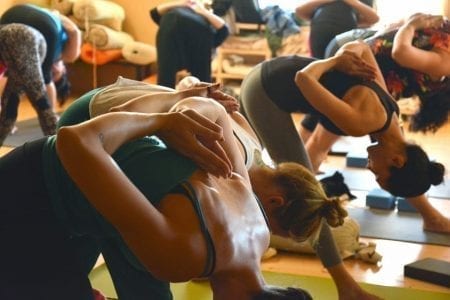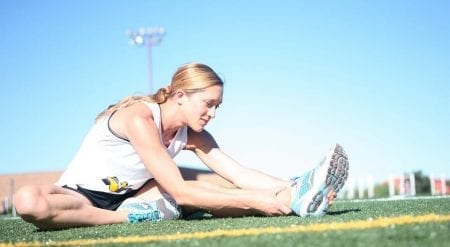 Physical activity can affect the alleviation of depression symptoms as effectively as pharmacotherapy or psychotherapy. It is even said that movement can do more good than antidepressant treatment.
Physical activity can affect the alleviation of depression symptoms as effectively as pharmacotherapy or psychotherapy. It is even said that movement can do more good than antidepressant treatment.
What is depression
Depression is a syndrome of mental disorders that manifests itself, inter alia:
- lowering mood,
- unwillingness to act, including leaving home,
- lowering the pace of action,
- reduction of physical activity,
- fear and anxiety,
- lack of pleasure,
- reduction of sexual drive,
- sleep disorders,
- eating disorders.
The modern lifestyle and problems that everyday life brings to us cause that more and more people suffer from depression. The causes of this disease can be many, ranging from traumatic experiences or a continuous state of ill-being. If left untreated, it can last for many weeks, months and even years, affecting our psyche, quality of life and health.
Depression is most often treated using pharmacotherapy (oral antidepressants) and psychotherapy. As an element of therapy, it is worth considering all forms of physical activity, both in the form of amateur and professional sport forms. Extremely important for both mental and physical health is the regularity of physical activity.
The impact of physical activity on depression
As it turns out, physical activity can affect the alleviation of depression symptoms as effectively as pharmacotherapy or psychotherapy. It is even said that movement can do more good than antidepressant treatment. Just the right dose and intensity of physical effort is enough for a person with depression to feel much better.
- Hormones of happiness – Why is movement so good to treat the symptoms of depression? This is due to the increase in the secretion of two chemical substances during endurance: endorphins and serotonin. Endorphin is the so-called happiness hormone, its increased level gives a feeling of pleasure and bliss. Serotonin is a substance that gives us a feeling of contentment. Practicing physical activity also raises the level of a substance called tryptophan, which is an essential factor for the production of serotonin.
- New acquaintances – choosing aerobics or other forms of movement taking place in a group, it’s easier to get social interaction, meet people, make new friends. This is a very good way to fight depression.
- Fresh air – by choosing the forms of movement taking place in the open air, we also oxygenate our body.
- Changing the appearance – positive changes in the appearance of the body resulting from physical activity affect the improvement of well-being and increased self-satisfaction. Seeing the effects that the movement gives us, we have more motivation to exercise, and thus a greater willingness to act and live.
- Good routine – regularly practiced physical activity introduces a good routine into our lives. Good, because thanks to her we want to get out of bed, plan a day and work. It is also good because we organize our lives and in this way we eliminate the moments of the idle psyche of inaction.
In addition to the well-known effects of physical activity on our body, such as improving the condition, increasing strength and muscular endurance, improving body flexibility or weight loss and reducing body fat, exercise also have a huge impact on our mental condition:
- improve the mood,
- improve well-being,
- increase self-esteem,
- increase self-confidence,
- they reduce the level of stress,
- increase the level of energy,
- improve the quality of sleep.
An important information when introducing physical activity as a way of treating the symptoms of depression is the fact that it works much faster than the pharmacotherapy used. On average, the effect of antidepressant drugs should be waiting for two to six weeks, while physical activity still affects during its performance.
Physical activity can also have a significant effect on the treatment of a depressed person when pharmacotherapy is not effective.
What to practice in states of depression?
In the treatment of depression, movement is of utmost importance. The most important and the most difficult one is to take the first step and start physical activity. Let’s find the kind of physical exercise that will give us the greatest pleasure. One that will put us in a state of contentment at the very thought of it.
All forms of physical activity that can be grown in the open air (where an additional advantage is oxygenating the body) are perfect, for example:
- walks,
- walk with poles, or so-called Nordic Walking,
- jogging,
- cycling.
But not only outdoor sports bring benefits in combating the symptoms of depression. Every type of movement performed outside positively influences the psyche.
Physically aerobic exercise has the best effect on our body and mind. Thus, other aerobic exercises performed in closed rooms are recommended for people with depressive states:
- aerobics and other forms of gymnastics,
- gym exercises using treadmills, stationary bikes and cross trainers,
- swimming.
This does not mean, however, that the anaerobic effort is inadvisable. Appropriately selected resistance exercises will also fulfill their anti-depressant action.
The so-called body & mind forms, which combine both body and mind, help to calm down, relax and unwind. They include:
- yoga,
- pilates,
- Tai Chi,
- stretching.

Relaxing techniques on which both yoga and meditation are based help to soothe the nerves and reduce the symptoms of anxiety neurosis.
How to practice being depressed
It should be noted that even a small amount of time devoted to physical activity has a positive effect in treating the symptoms of depression. However, in order for the effects to be as good as possible, this activity should be used regularly, over a longer period of time.
The optimal solution is to exercise three times a week. This effort should last from one hour to one and a half.
Of course, starting to practice, the duration of the effort will be shorter. It is a good idea to start with, for example, 20-30 minute walks, to gradually increase your physical fitness as well as the intensity of the exercises. A small physical effort can be applied even daily, provided that its intensity is not too high.
Before we decide to start physical activity, it is worth consulting your doctor about contraindications to exercise. One of them may be, inter alia, the use of antidepressants, which may cause a number of actions on the body, such as hypersensitivity to light, high blood pressure or drowsiness. Then the physician should indicate what form of movement will be the best for us and what should be paid special attention to.
If the depressive state is associated with the fear of leaving the home, let’s do exercises within it.
